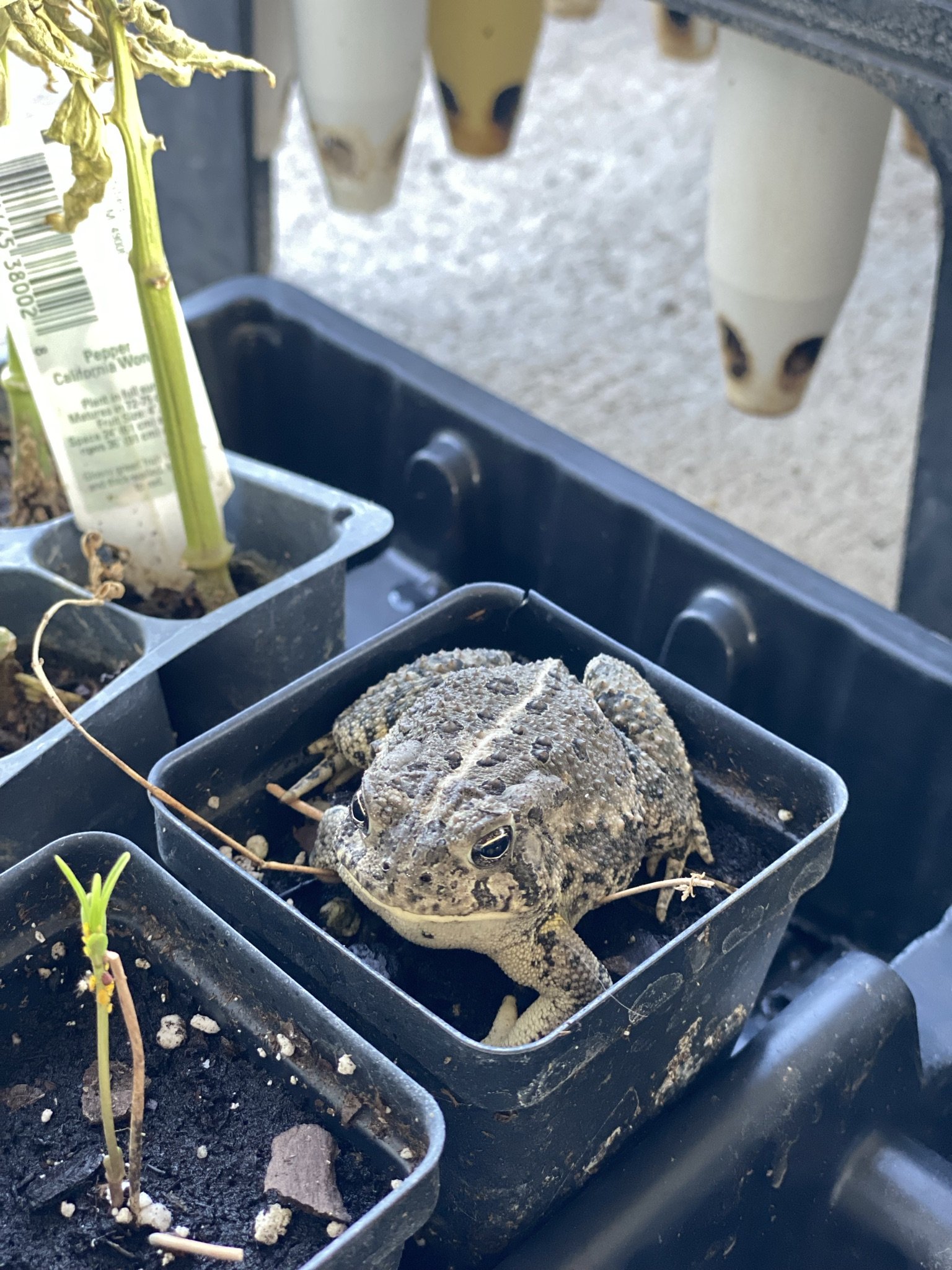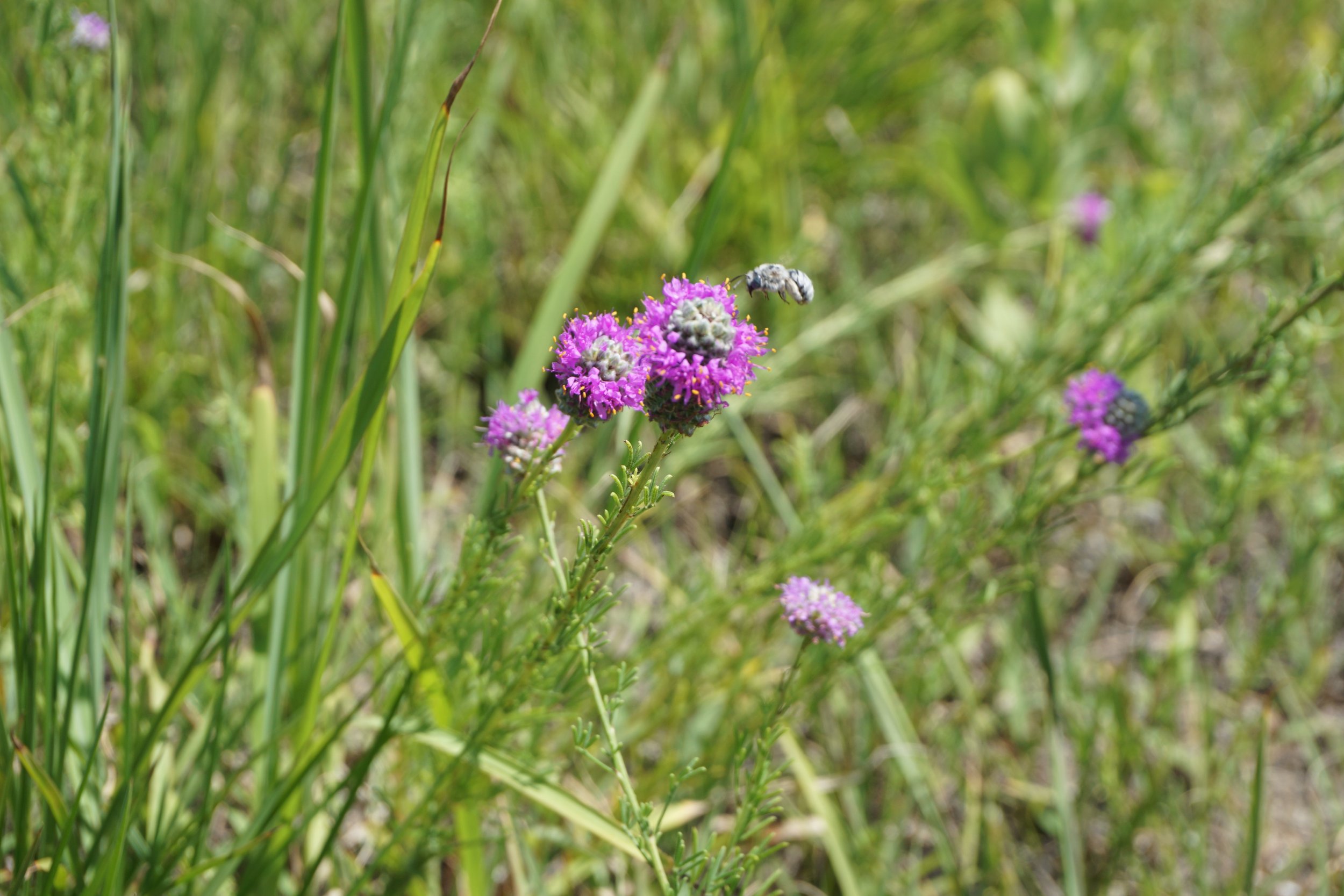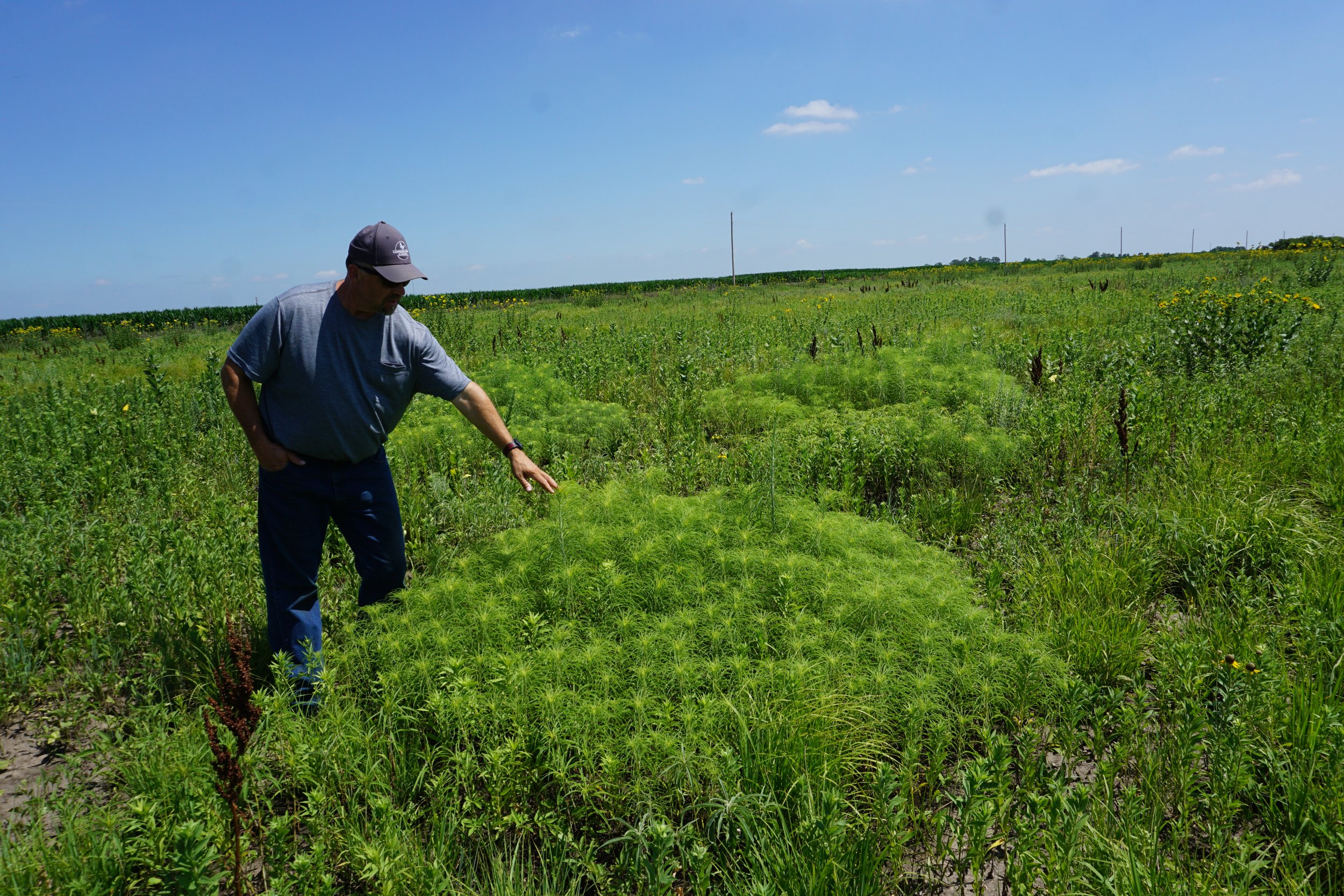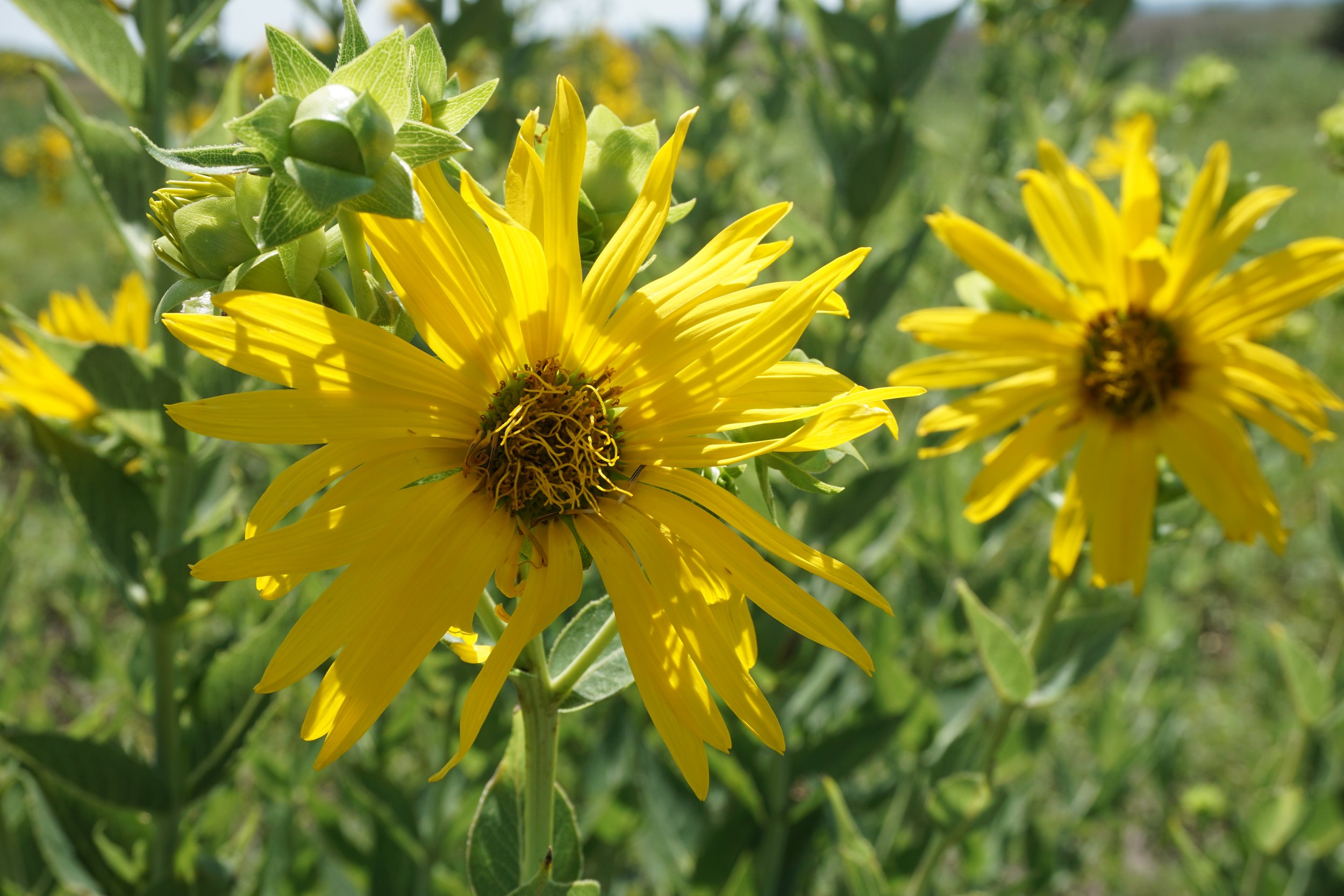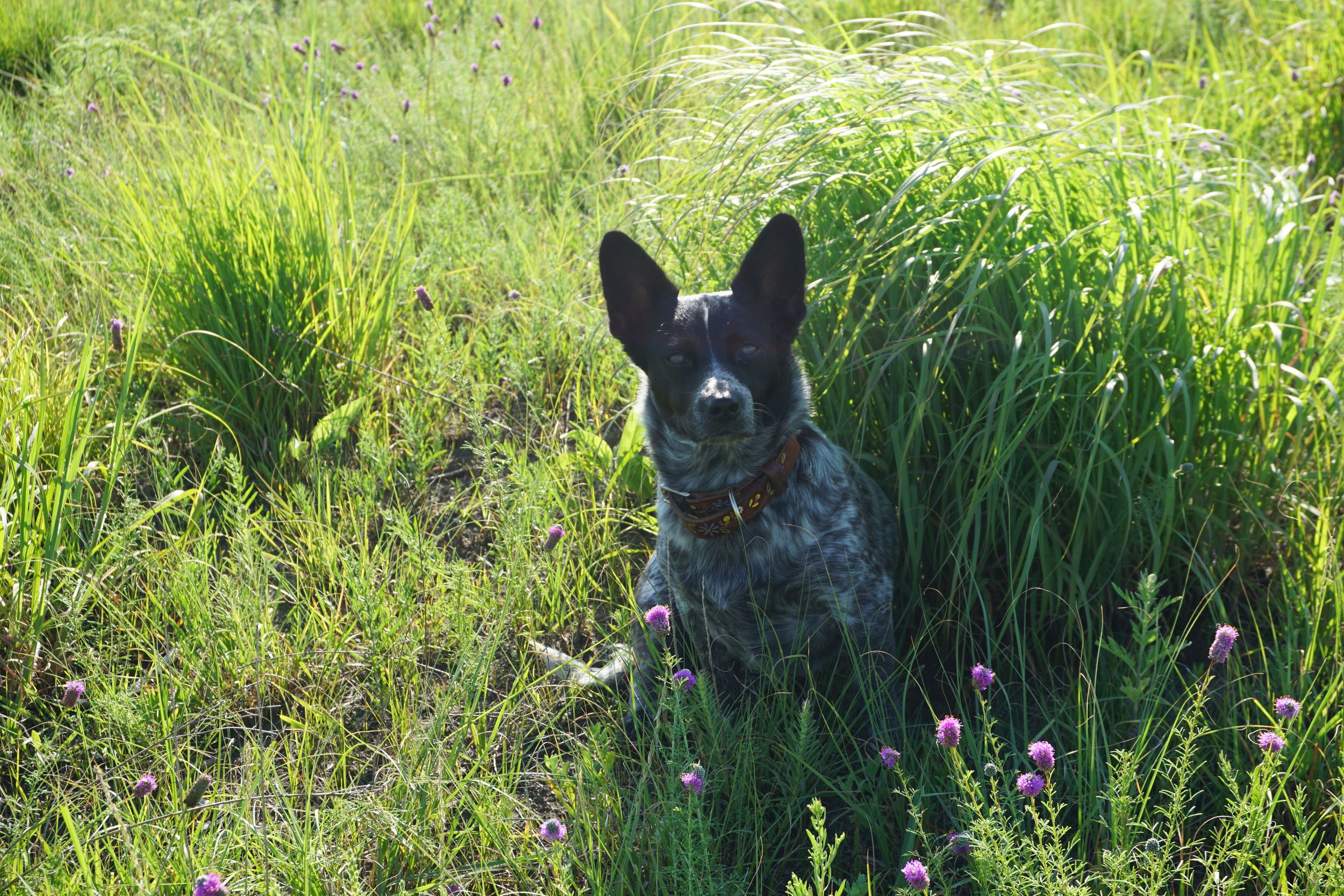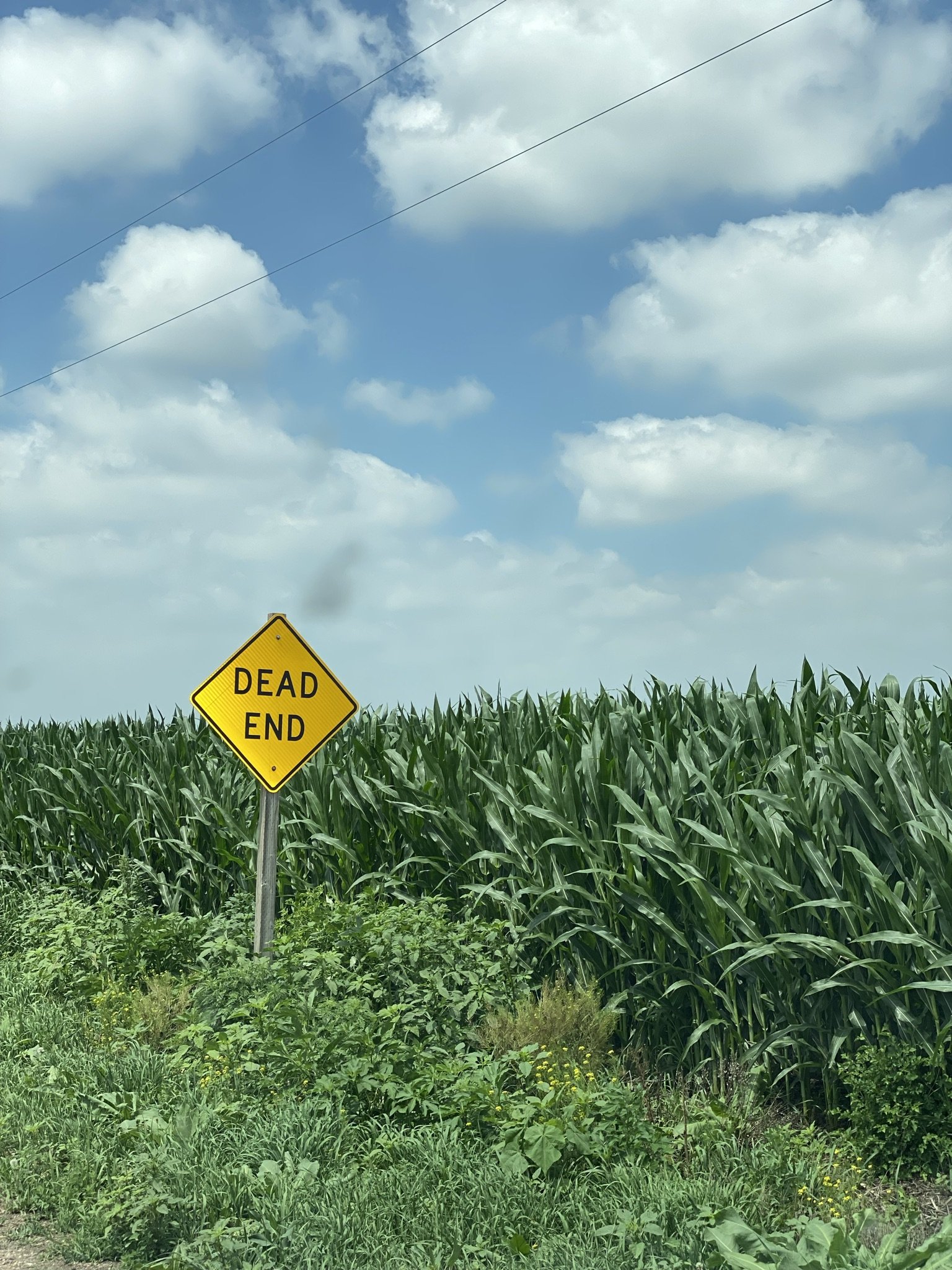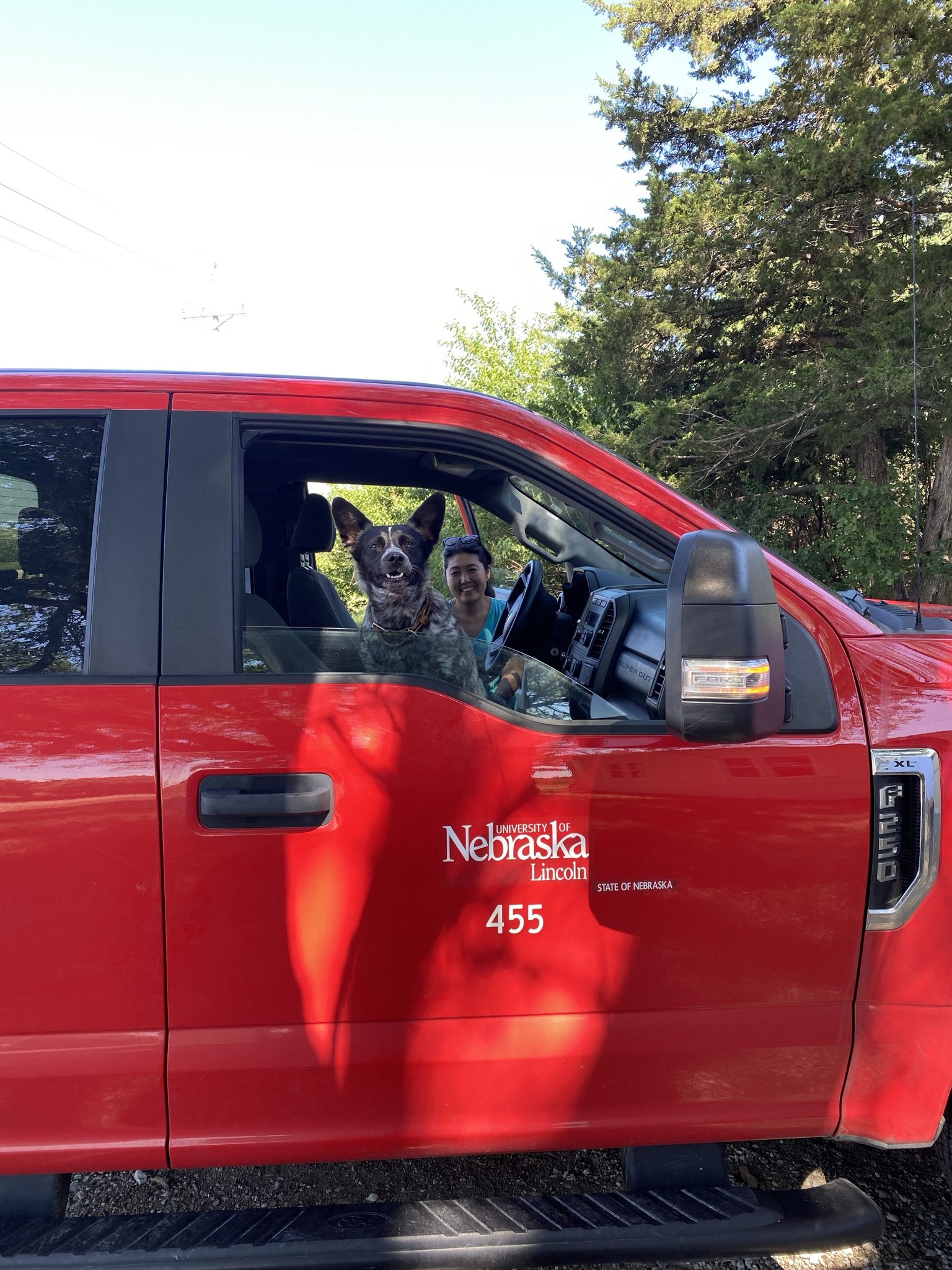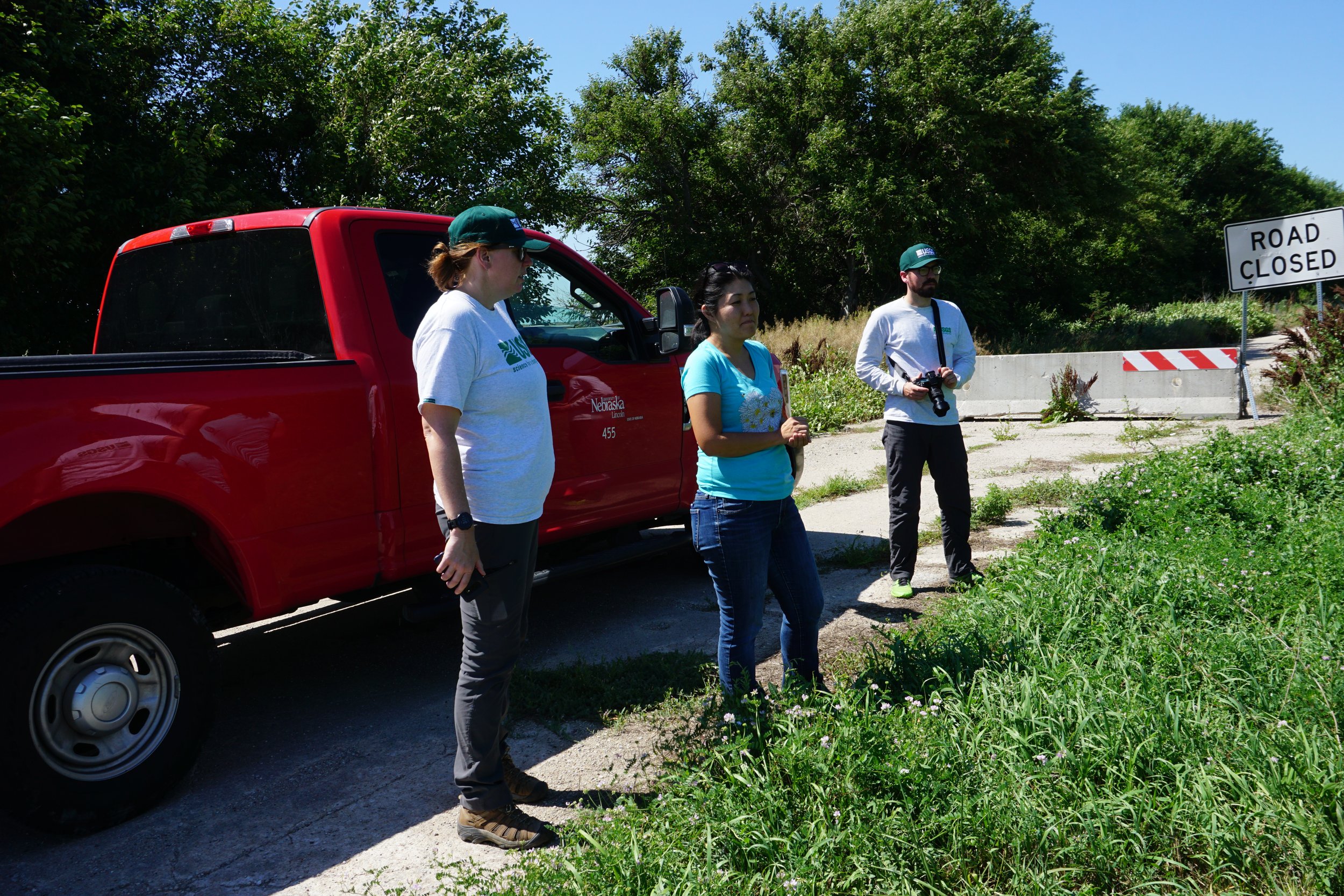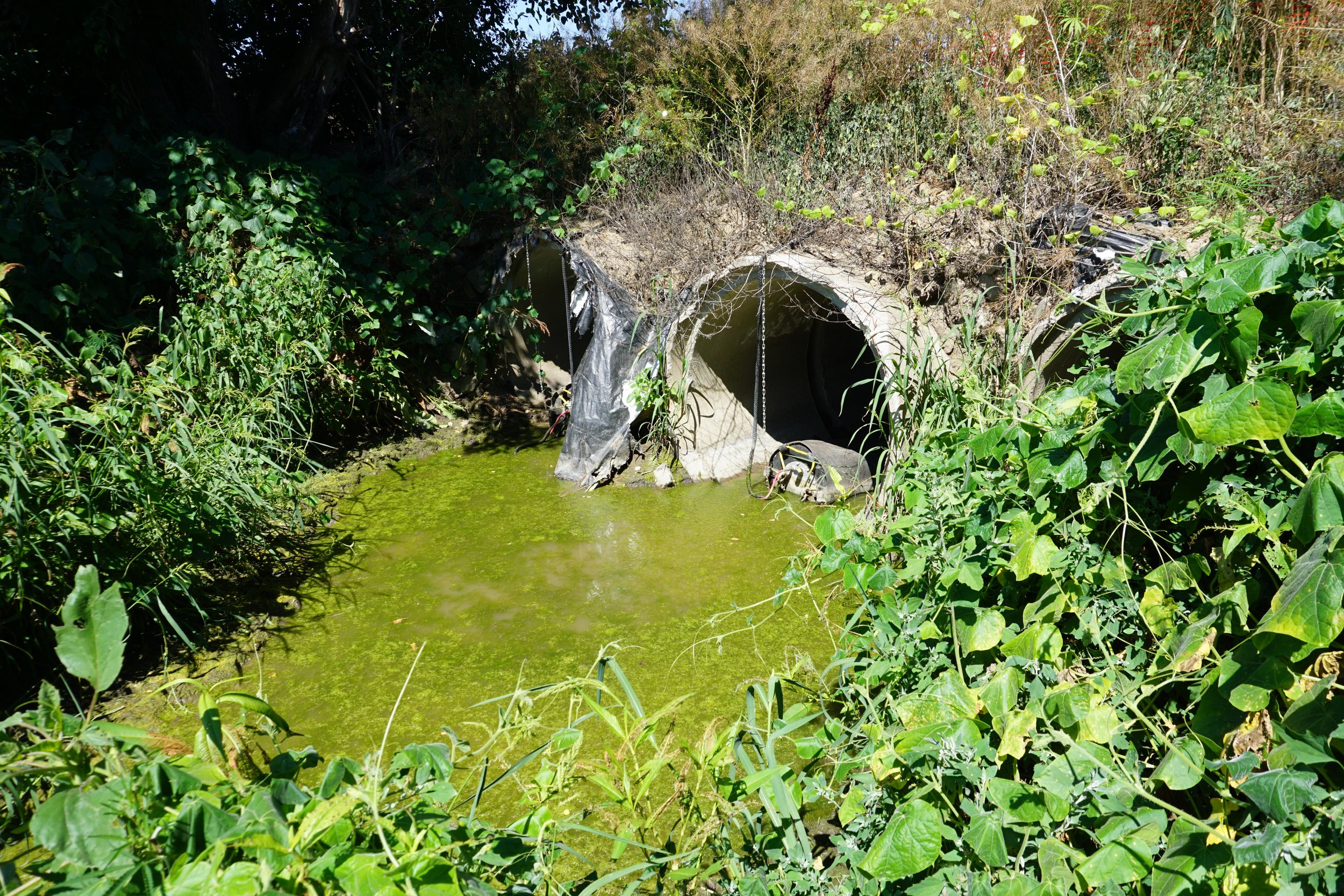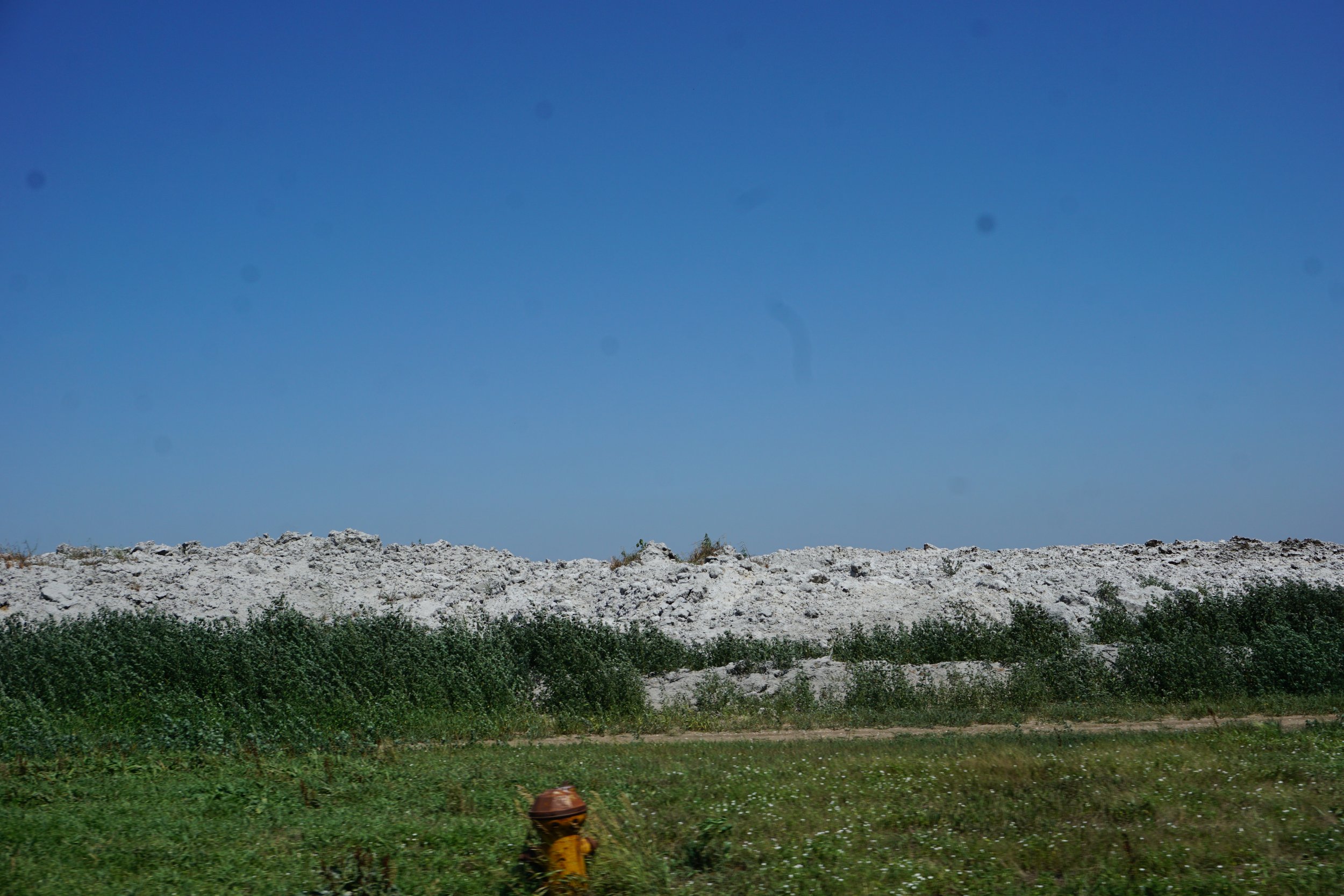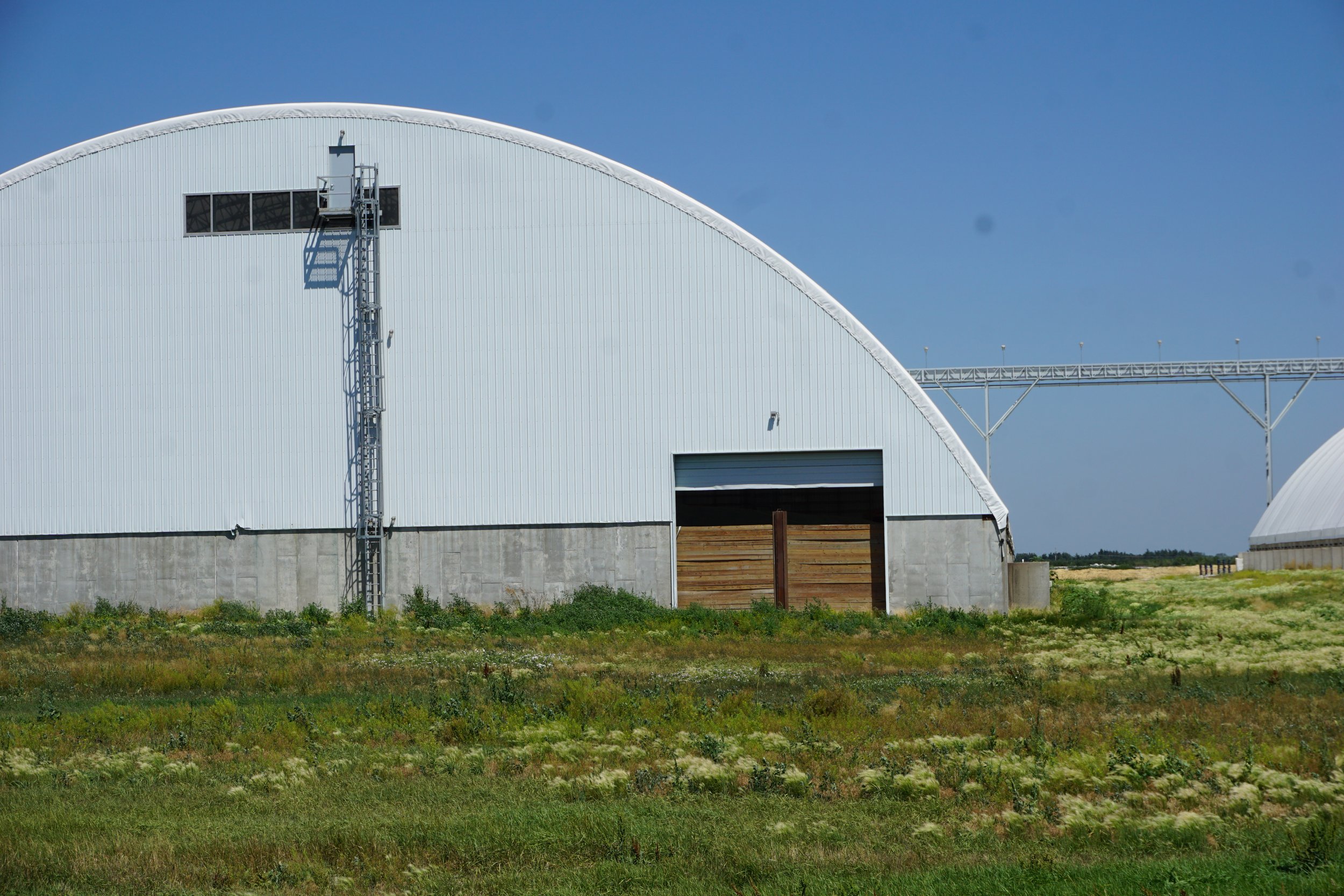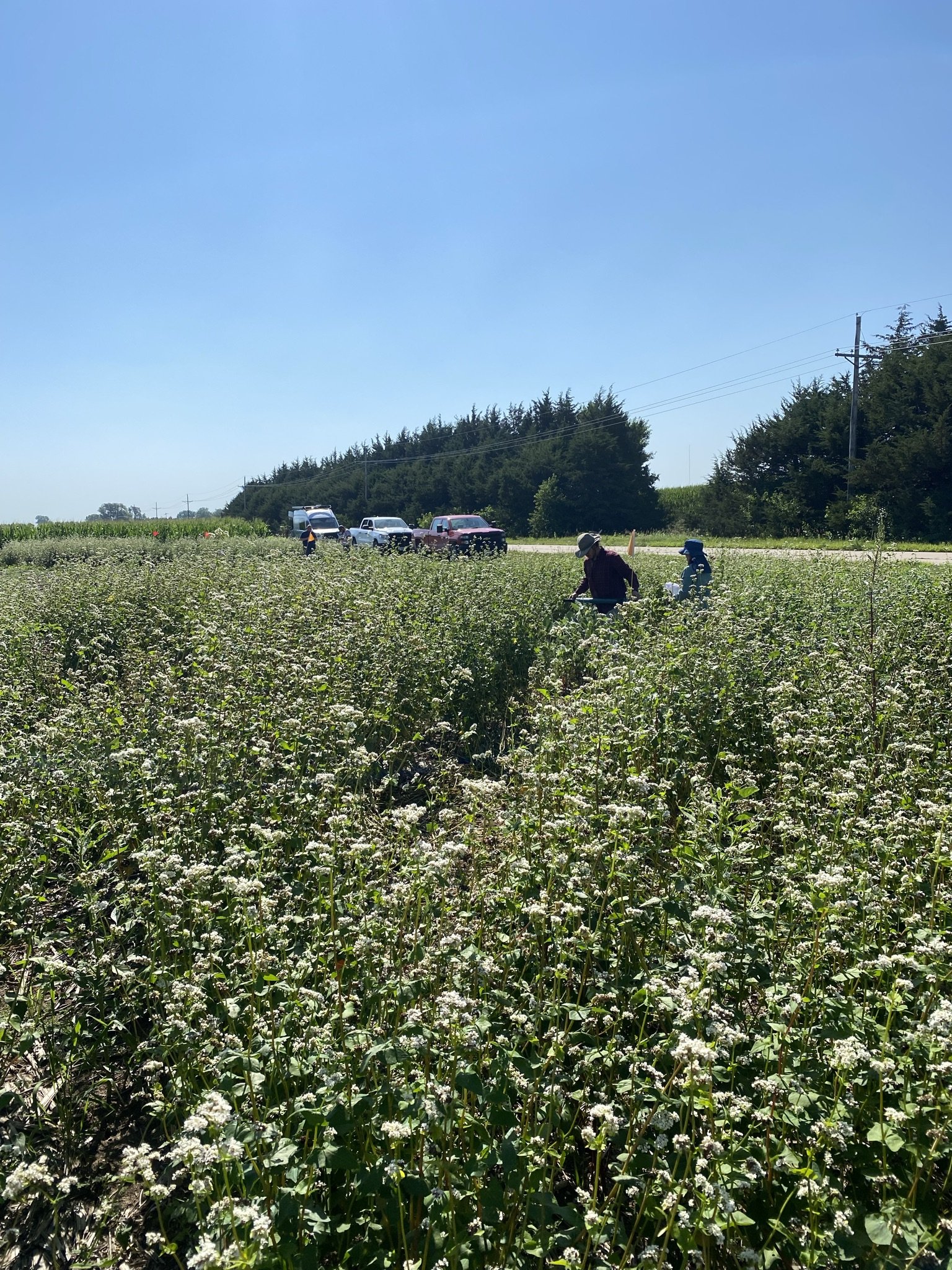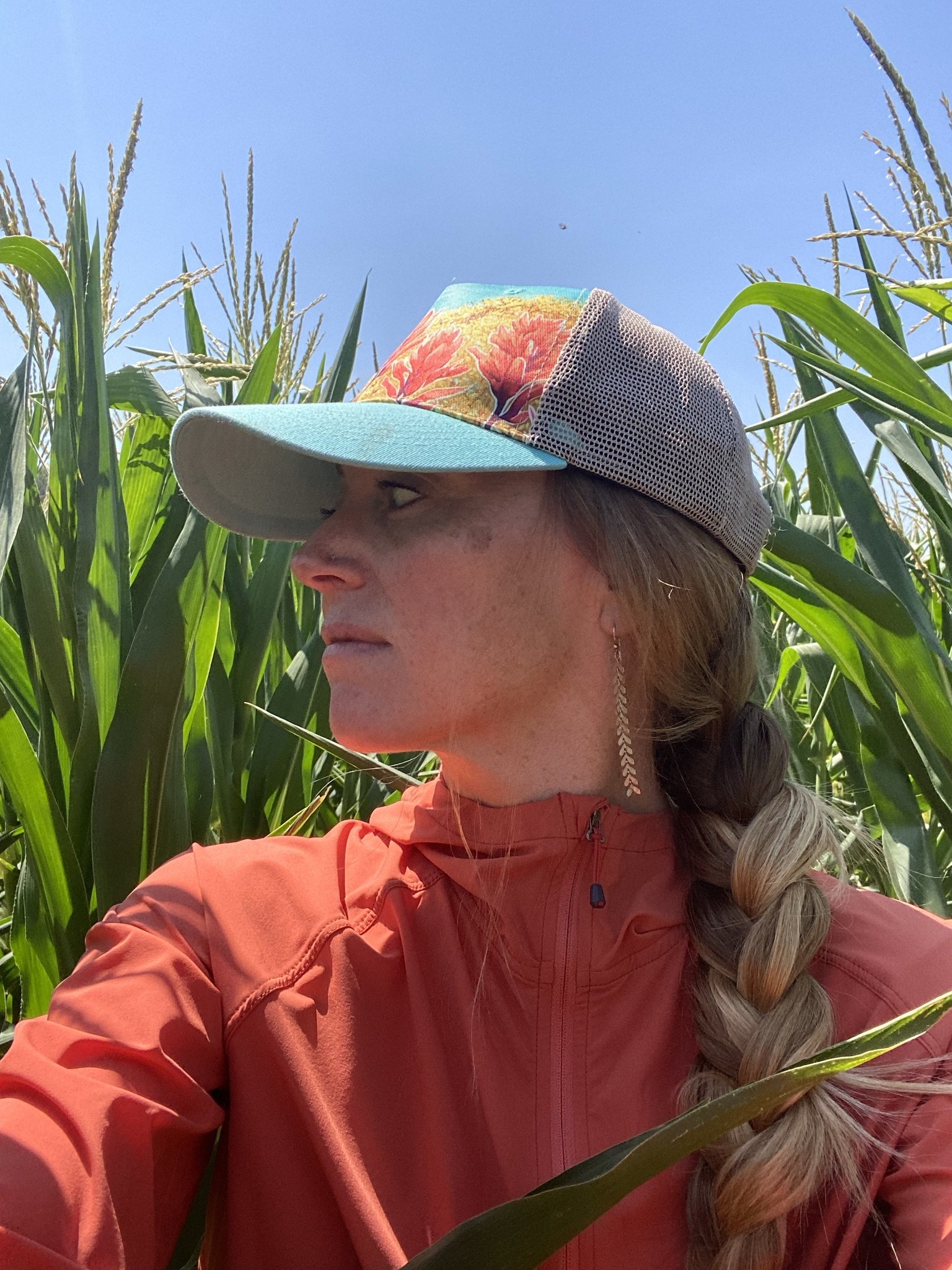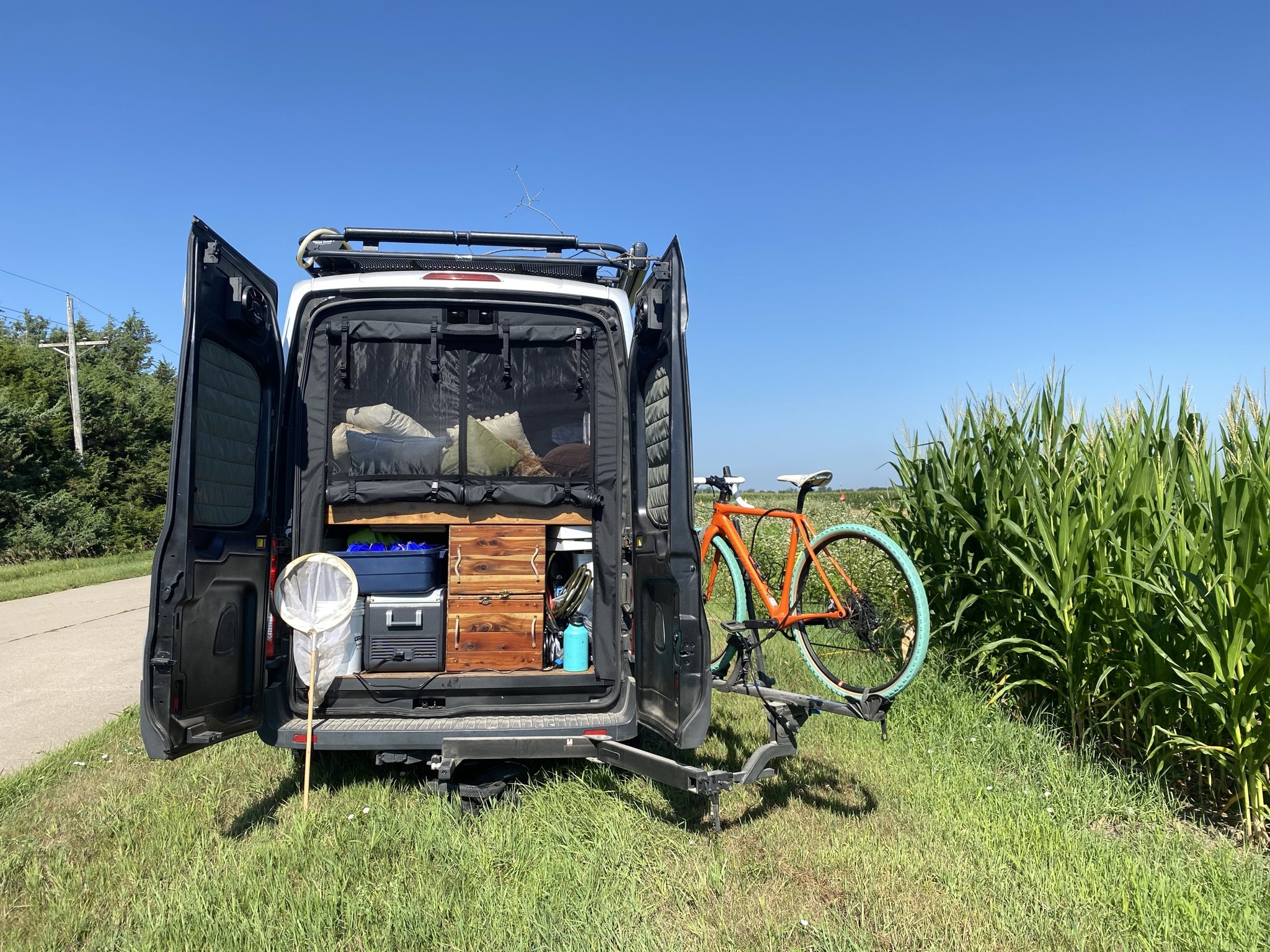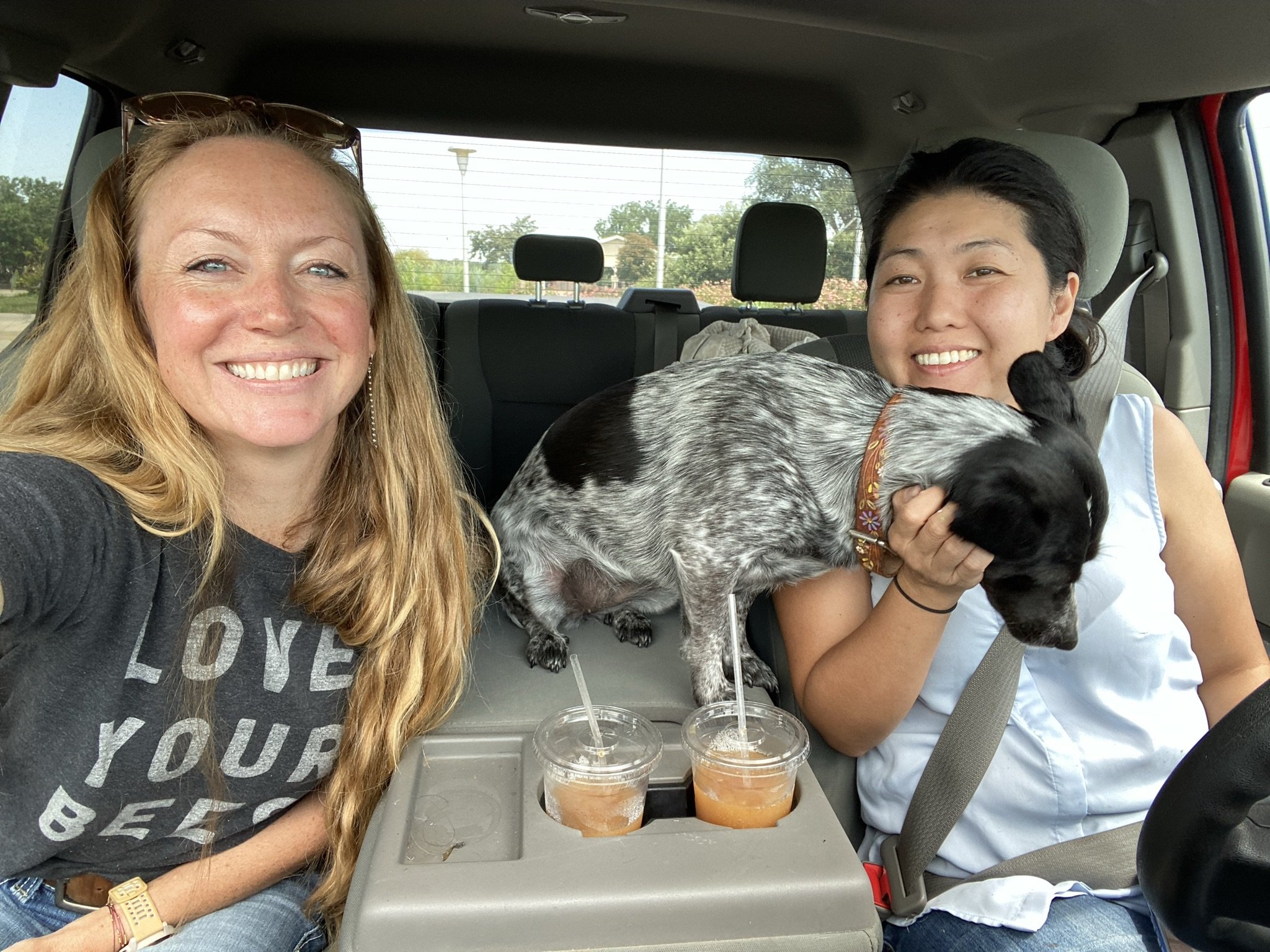Big Thoughts on Corn and Bees
Over the mountains and rivers and through the corn I go to Central and Eastern Nebraska.
My first stop was to meet up with Peter Berthelsen of Conservation Blueprint. I met Pete on the beekeeper speaking circuit in about 2012 and we were fast friends. Pete and his team create custom seed mixes, and provide project design and consulting services for landowners (primarily farmers and ranchers) that are interested in pollinator, and other wildlife, conservation projects.
I, of course, was interested in his pollinator habitat projects.
Pete was super generous with his time and took Midgie and I on a tour of all of the demonstration projects at the site. Then we settled in with the toads, shop cat, and Pete’s wife, Laura, for grilled pizza, Hopewell wine, and good conversation (that spanned into the wee hours) about the state of all-things-agriculture-and-conservation.
I was pretty amazed to see the diversity of the prairie system, even in the current drought they are experiencing, and really impressed with Pete’s work both on this property and his other project, the Bee and Butterfly Habitat Fund.
But I’m not going to lie. It was also heartbreaking to see fragments of what used to be after driving for hundreds of miles flanked by chemical-laden corn and soy in every direction, even planted right up to people’s homes. According to the USDA, corn is the most planted crop in the US. There are about 90 million acres of corn grown here, and less then 1% of this is corn that we actually eat.
In the past decade $50 billion dollars have been pumped into the corn industry to support ethanol, livestock feed, and corn syrup. During this time, the price of (subsidized) junk food has gone down and (mostly unsubsidized) whole food has gone up. For example, according to the American Journal of Clinical Nutrition, (also in the last decade) the cost of corn syrup-based sodas has gone down 33% and the cost of fruit has gone up 40%.
This matters to me because Nebraska prairies support a pretty massive load of BEES! I was astounded by all of the cool, weird bees that I saw at Conservation Blueprint. There is a pale blue bee, perhaps a Eucera (?) that is cute as a bug’s ear and sounds like a mosquito! Nebraska has 20 different species of bumble bees alone. I spent one morning hunting for bees for my pollen studies and witnessed a plethora of pollinators darting around on the purple prairie clover, Dalea purpurea. They also loved the rosinweed, Silphium integrifolium, a flower that is thriving in drought conditions thanks to its 30 FOOT TAPROOT!!
But think about this - for every acre of corn that is planted, netting the farmer almost nothing after the cost of production and land lease - millions of plants, thousands of bees, and trillions of microbes loose their lives.
Real Food Media reports on a paper published in 2021 from Friends of the Earth, the Center for Biological Diversity, and the University of Maryland— “the first comprehensive review of the impact of pesticides on soil organisms. Researchers analyzed nearly 400 studies focused on the effect of pesticides (a term that includes insecticides, herbicides, and fungicides) on 275 species or groups of soil invertebrates, from beetles and earthworms to mites and ground-nesting bees. In 71 percent of cases, pesticides either directly killed the organisms being tracked or significantly harmed them; for example, by impairing their growth and reproduction or decreasing their abundance and diversity. These findings parallel previous research that illustrates pesticides’ impact on vital soil microorganisms like bacteria and fungi.”
But this is not the fault of the farmer, this has been done to them and to us by a very broken and complicated system – that we pay for out of our paychecks.
(The film Food, Inc. is an oldie but goodie that beautifully and factually articulates how we got here, available to watch for free here.)
According to Food & Environment Reporting Network (FERN) the government paid a record $41.6 billion in a variety of subsidies to farmers in 2020. Farmers received a combined $91.6 billion in 2018, 2019, and 2020 from crop insurance, traditional crop supports, trade war assistance, and pandemic relief.
The Farm and Food File’s Alan Guibert reports, “If you add in 2021 data, direct farm program payments for the most recent four years total $115.5 billion. That means 29 percent of all net farm income earned by farmers, ranchers, and landowners between 2018 and 2021 came from U.S. taxpayers.”
The vast majority of these payouts didn’t go to small farmers suppling their communities with nutritious whole food, they went to commodities (corn, soy, cotton, sugar, etc).
We are not only subsidizing the harm of bees in the Heartland, but whole communities are also being poisoned. My next stop was Mead, Nebraska. Home of the AltEn pesticide crisis. A story broke open by my friend, University of Nebraska-Lincoln’s Dr. Judy Wu-Smart, and the Guardian in the 2021 article, ‘There’s a red flag here’: how an ethanol plant is dangerously polluting a US village'
AltEn is a now-shuttered industrial plant that was charged with the disposing of pre-treated, un-planted surplus corn seed by way of manufacturing ethanol, biochar, and other farm products. However, the site, and it’s products, oozed poison into the soil and water and puffed toxins into the air, on to flowers, into homes, and the near-by military base – many, many times the legal limits.
I want to point out - this is not just a Nebraska issue. For years the majority of surplus corn in the country went to AltEn, so if you drive a vehicle or eat meat, you share in this responsibility.
“Liquid waste was stored on the site in three lagoons,” reports Grist, “testing by state regulators in 2019 detected neonics at over 5,000 times the level considered “safe” by the federal government. The Nebraska Department of Environmental Quality found concentrations of clothianidin at 58,400 parts per billion and thiamethoxam at 35,400 in one of the lagoons. To avoid harm to aquatic life, the U.S. EPA caps levels of these two neonics at 11 and 17.5 parts per billion, respectively. Inspections found multiple tears in the liners of at least two lagoons that “compromise[d] the integrity of the structure” and could have allowed the wastewater to seep into the ground, according to the state’s lawsuit against the company.”
Grist continues, “Because the chemicals are water-soluble, they’re known as “systemic” pollutants, Hoyle said, meaning they stay with the plant as it grows and then can be passed on to whichever organism comes into contact with it. That’s what makes them so dangerous for bees, as well as other insects and aquatic invertebrates. Neonics are also toxic to humans. Though research on their long-term effects is still ongoing, scientists know they target the nervous system, and they have been linked to birth defects, developmental delays in children, and even an increased risk of breast cancer. But despite these risks, the EPA doesn’t regulate treated seeds as pesticides because of an exemption for “treated articles” that doesn’t take into account how the chemicals stay in the plants as they grow.”
Please continue to read this excellent article here.
I spent a few days with Judy lurking around the perimeter of the AltEn site, and also talking with her students, lab staff, and other visiting scholars and collaborators. I spent three mornings driving around in the BGO BeeVan attempting to gather samples from bees to submit for analysis to help build a case for the need for site remediation, but found scant amounts of bees – even in a large field of buckwheat – I couldn’t gather enough data to submit to the lab.
Though my collection effort was a bit of a bust, our work together is just getting started. We plan to work remotely together to train students to collect the data I was aiming for (pollen collected from bee legs) and I’ll also be a collaborator with the Great Plains Master Beekeeping Program – assisting with both Kids and Bees and Regenerative Ag curriculum.
If you feel moved to take action in the Mead crises here are the top requests that I gleaned from my time with the university crew:
1. Dig through this comprehensive site to learn more about this issue and then tell all your friends to do the same!
2. If you live in Nebraska, pressure your electeds to fund the University of Nebraska with $10 million to study the crisis for the next 10 years – watch this clip to learn about a bill that would do just that (and failed in early 2022, but must be re-introduced). Not local to Nebraska? Please bring up the issue with your federal electeds.
3. Comment RIGHT NOW to end the EPA’s “Treated Article Exemption” for seed. This basically creates a loophole for almost all corn and soy seeds to be treated with nasty, unregulated chemicals. It’s nearly impossible to find untreated seed. Here is an article to learn more. Here is the link to comment (blue box in the upper left corner). Again, if you drive – there is ethanol in your tank right now, and you have a stake in this! Comments are due by August 5th. I will be making clear in my comment that chemical-coated seeds need to be regulated by the EPA from the cradle to the grave.
4. If you have a shred of power or connection in or to the EPA, please put pressure in any way you can to declare AltEn as a Superfund Remedial Site.
5. Speaking of the EPA – the claims that ethanol is “green” is bunk. Don’t get me started. While on the board of the National Farmers Union I witnessed the ethanol spin first-hand. A recent study funded in part by the National Wildlife Federation and U.S. Department of Energy, found that ethanol is likely at least 24% more carbon-intensive than gasoline due to emissions resulting from land use changes to grow corn, along with processing and combustion. We need to undo harmful policies that put corn in our gas tanks. Please support any policy you can that supports actual climate-friendly transportation, e.g. improved public transportation, solar and wind power to “fuel” electric vehicles, etc.
6. As per always, please support local, seasonal, truly regenerative agriculture – especially responsibly farmed, pasture-raised meat!
For more pictures of my trip across the Great Plains to explore ag issues and solutions, that I will always connect back to bees, follow me on social media at @sarahbeegirl, check out my story highlights on Instagram, and jam out along with me with my road trip playlist on Spotify.


